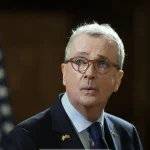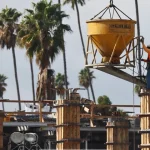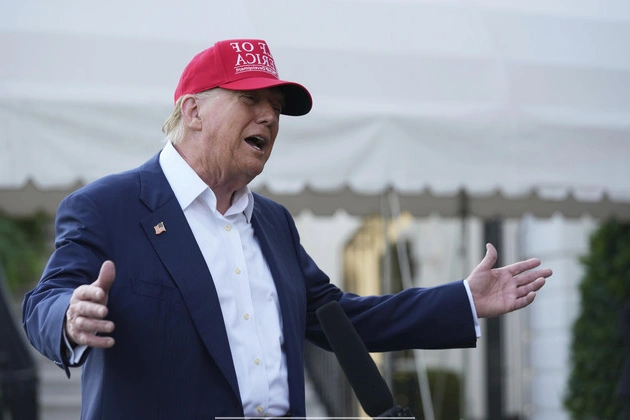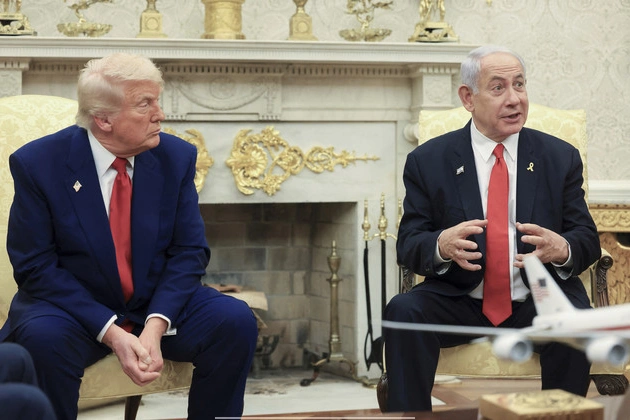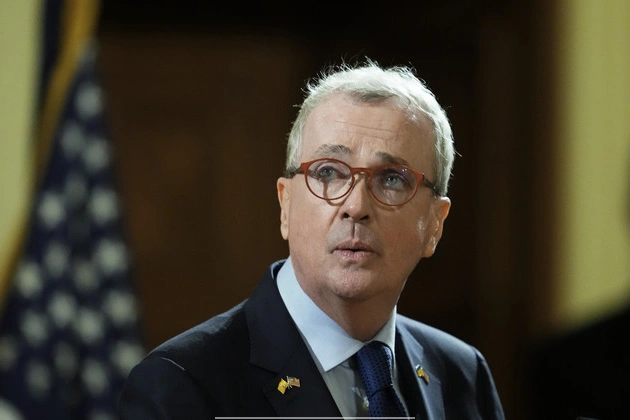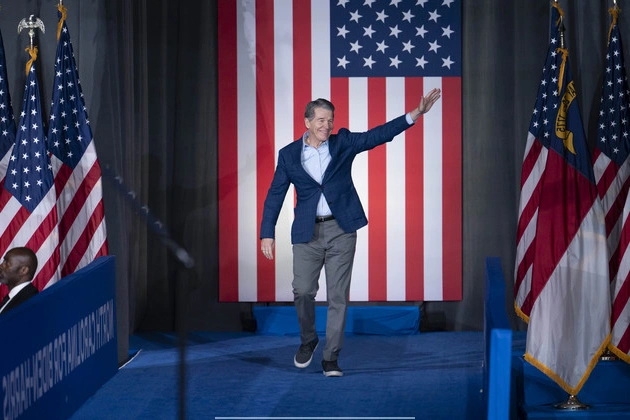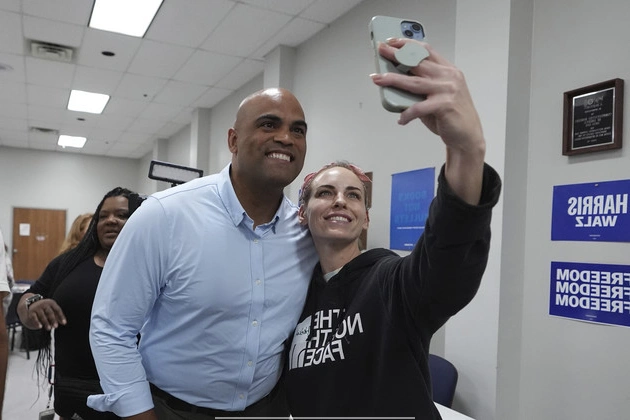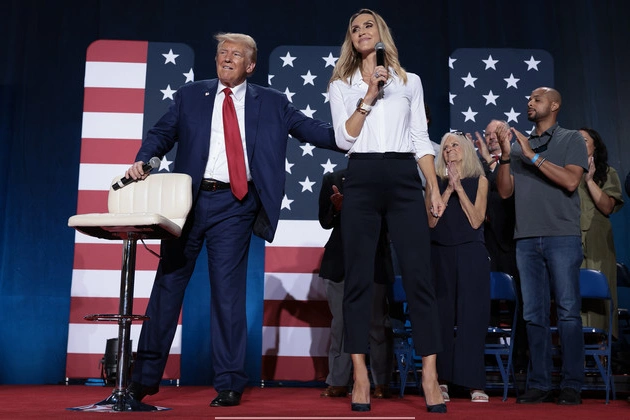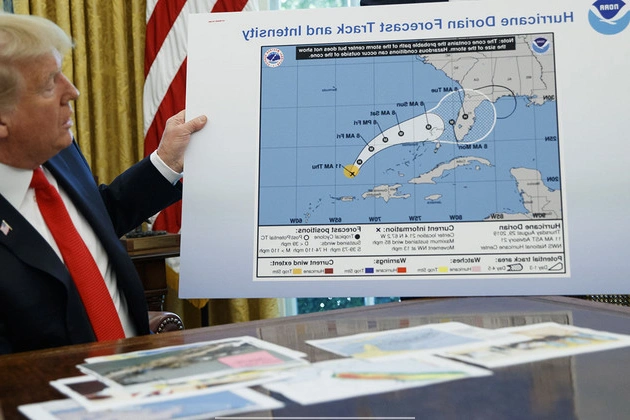
President Donald Trump’s intense exchange with Canadian Prime Minister Mark Carney over making Canada the 51st state this week offered a vivid example of how the president’s blunt demands to alter the world’s map are both shaping and complicating his foreign policy.
They have led to alarm among allies, a battle between the White House and its press corps over labels on the map, and concerns that foes will be emboldened on territorial claims — not to mention plenty of confusion. But Trump’s cartographical compulsion and his desire to alter them was ingrained long before his first presidency. It came out of his career in business, where he derived power from acquiring property and branding rights.
Mapping Power Dynamics
“I’m a real estate developer at heart,” Trump said Tuesday during his Oval Office meeting with Carney, referring to his wish to bring Canada under U.S. control. “When you get rid of that artificially drawn line … when you look at that beautiful formation when it’s together, I’m a very artistic person.”
In 2022, Trump told the journalists Peter Baker and Susan Glasser: “I love maps. And I always said: ‘Look at the size of [Greenland]. It’s massive. That should be part of the United States.’”
Trump has said he wants the U.S. to “get” Greenland, turn Canada into the “51st state,” “take back” the Panama Canal and “own” Gaza. He upended the White House press corps and raised tensions with Mexico over a debate over the use of the term “Gulf of America” to describe the body of water known centuries before the U.S. existed as the “Gulf of Mexico.” And amid escalating tensions with Iran, Trump is considering changing the name of the Persian Gulf to the “Gulf of Arabia” during a visit to the Middle East next week.
Geopolitical Ramifications
It’s a political tactic that has lasted as long as maps have, according to Karl Offen, a geography professor at Syracuse University. “Maps and politics have been wedded from day one,” Offen said. “To name is to claim.”
That naming and claiming is having real geopolitical consequences. It became a core issue of the Canadian election, catalyzed protests in Greenland and threw the White House press corps into chaos. Mexican President Claudia Sheinbaum threatened to sue Google for complying with the “Gulf of America” name change. The Iranian foreign minister promised the “wrath of all Iranians” if Trump moves forward with “Gulf of Arabia.”
Political Messaging Through Maps
Maps have been core to Trump’s political messaging for years. During both of his nonconsecutive terms, he’s leaned on county-by-county electoral maps that bathe the country in red to bolster the legitimacy of his wins — even though those maps fail to illustrate how red counties tend to be less populated than blue ones (he lost the popular vote in 2016). In one first-term viral moment, Trump presented a map in the Oval Office that appeared to be altered with a Sharpie.
Since winning his second term, Trump has posted to social media several political maps, including ones that show the “Gulf of America” as well as the U.S. merged with Canada. And as his expansionist impulses have grown more brazen, he’s framed them in real estate terms. Trump, for example, called the Gaza Strip, decimated by 18 months of war, “oceanfront property” and “a big real estate site” and shared on Instagram an AI-generated video of “Trump Gaza” reminiscent of a developer’s pitch deck.
Global Reactions and Responses
When Trump on Tuesday invited Carney to the Oval Office, his “51st state” comments were top of mind for the newly-elected prime minister. “As you know from real estate, there are some places that are never for sale,” Carney said, sending a message of defiance to his home audience.
Trump replied: “Never say never.”
Trump has complained that Canada is “ripping off” the U.S. economically and argued that both countries would be better off if Canada joined the union. And he and Vice President JD Vance have said the U.S. has a security interest in Greenland, citing threats from Russia and China. The U.S. also has broader strategic interests in the resource-rich Arctic region, where melting ice is opening up new trade routes.
Strategic Cartographic Tactics
But the president’s fascination with Canada and Greenland could also be explained, in part, by their size on a map. Canada is the world’s second-largest country by area and Greenland is its largest island. But their northern latitudes also mean the common Mercator projection inflates their size, said Ryan Weichelt, chair of the geography and anthropology department at the University of Wisconsin, Eau Claire.
“If you want to go after something, you make it look big,” Weichelt said. “This has been a common tactic in political cartography for a long time, using the right projection to make your point.”
American Exceptionalism and Geopolitical Narratives
In a statement to POLITICO, White House Communications Director Steven Cheung lauded Trump for having “a deep appreciation for geography and history,” adding that “This Administration is about American Exceptionalism.”
A visit by Second Lady Usha Vance to Greenland’s capital for a dogsledding race in March was abruptly walked back after Danish and Greenlandic officials slammed the trip as an escalation of Trump’s annexation rhetoric.
“We will never, ever be a piece of property that can be bought by anyone, and that’s the message I think is most important to understand,” Greenland’s prime minister, Jens-Frederik Nielsen, said last month, foreshadowing Carney’s response.
The attempt to name the “Gulf of America” also thrust the White House press corps into chaos after officials blocked reporters and photographers from the Associated Press from covering some events in retaliation for its guidance on the term in its influential stylebook, which calls for the original name to be used while acknowledging Trump’s term. A judge ultimately ruled the wire service must be reinstated in the White House press pool.
Future Diplomatic Implications
Amid nuclear talks with Iran, Trump on Wednesday told reporters he will “make a decision” on trying to change the name of the Persian Gulf to the “Gulf of Arabia” during a trip next week to Saudi Arabia, Qatar and the United Arab Emirates, all of which use the term “Arabian Gulf” to describe the waterway that is 7,000 miles from America’s shoreline.
“I don’t want to hurt anybody’s feelings,” the president said. “I don’t know if feelings are going to be hurt.”
Iran swiftly clapped back. Seyed Abbas Araghchi, the country’s foreign minister, said the name change would be a “short-sighted step” and “will only bring the wrath of all Iranians.”


